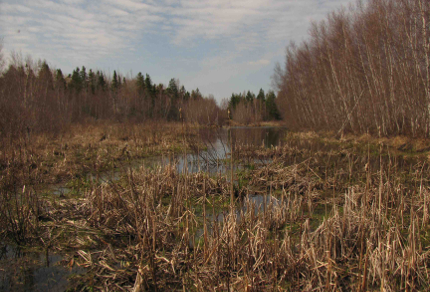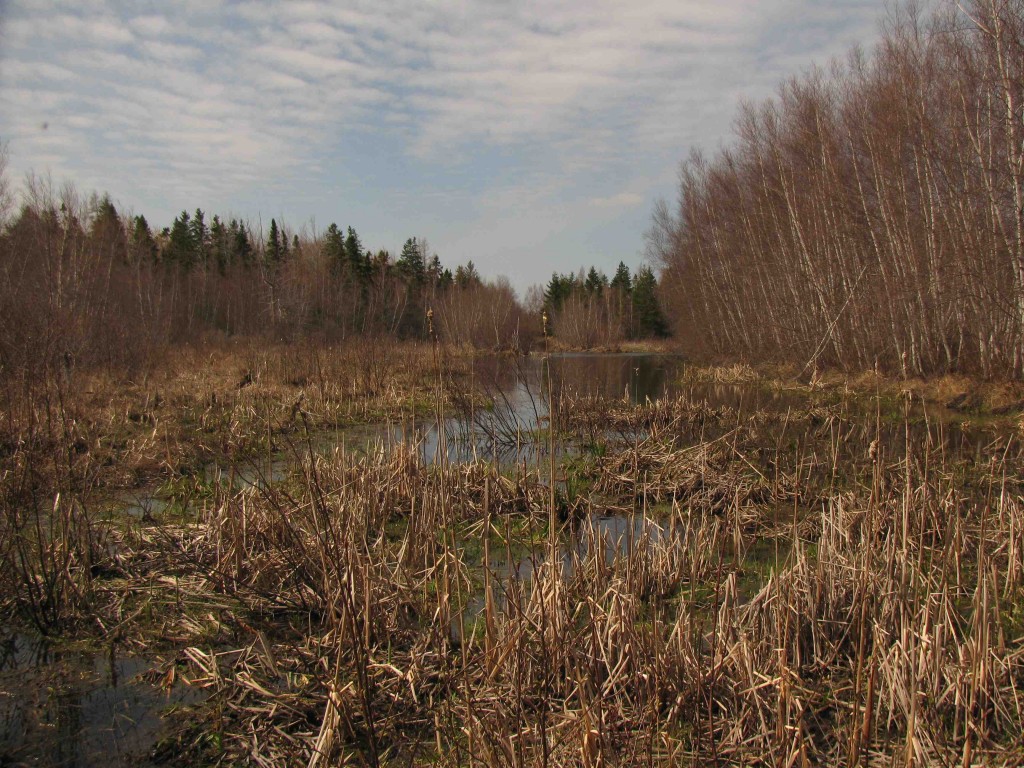
Cattail Marsh at Wallace Bay National Wildlife Area, Nova Scotia (© Magi Nams)
On a hunt for early warblers, I drove this morning in sun and wind to Wallace Bay National Wildlife Area, a freshwater marsh located on the north shore of Nova Scotia about 35 kilometres west of Tatamagouche, my home village. As I drove through the village, I spotted a pair of courting common grackles on a lawn – the darker male with his feathers fluffed out and bill pointing skyward – and a second pair of grackles mating vigorously in the parking lot of Sedgwick Memorial Presbyterian Church. From high ground west of the village, I looked out over the Northumberland Strait lying wind-ruffled between Nova Scotia and Prince Edward Island, the ocean pale blue with tongues of forested land licking into it.
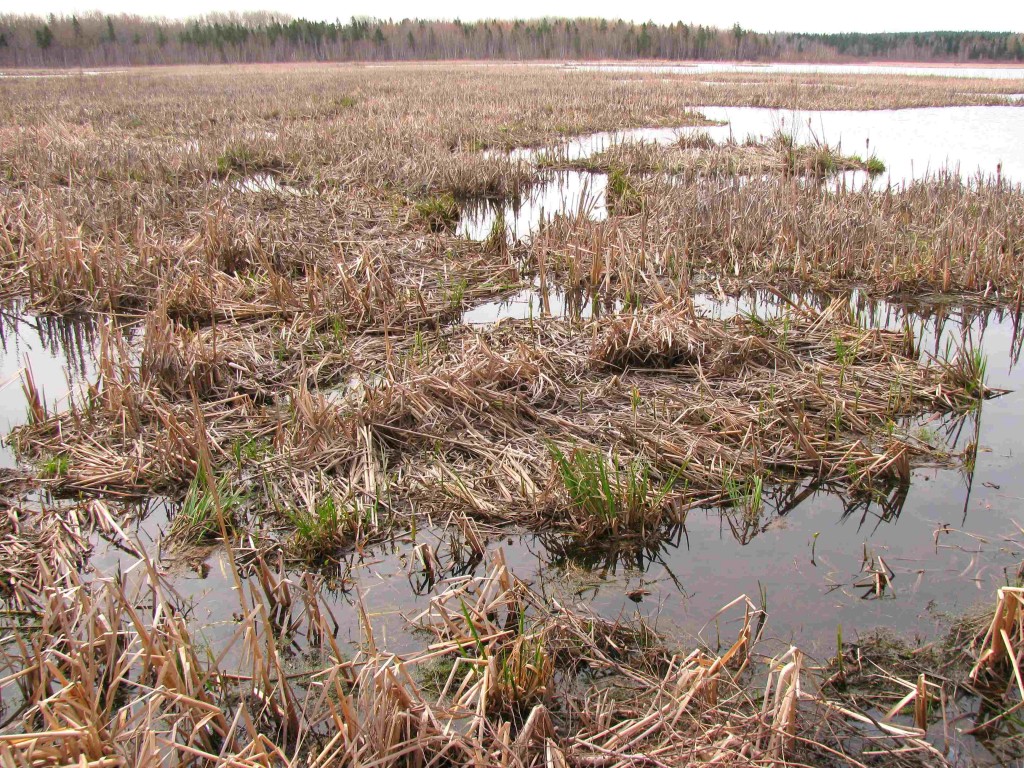
Tangled Cattails After Winter, Wallace Bay National Wildlife Area (© Magi Nams)
At the Wallace Bay NWA, which is managed by the Canadian Wildlife Service, remnants of last year’s cattails formed a bleached, tangled, and broken mass of dead stalks and leaves leached and squashed by the weight of winter snow and ice. A scattering of fruiting stalks stood bare or retained ravaged heads of seeds. Near the parking area, a hodge-podge of songbirds dented the air with territorial songs – swamp sparrow, with its junco-like trill, hermit thrush, song sparrows, and a single yellow-rumped warbler.
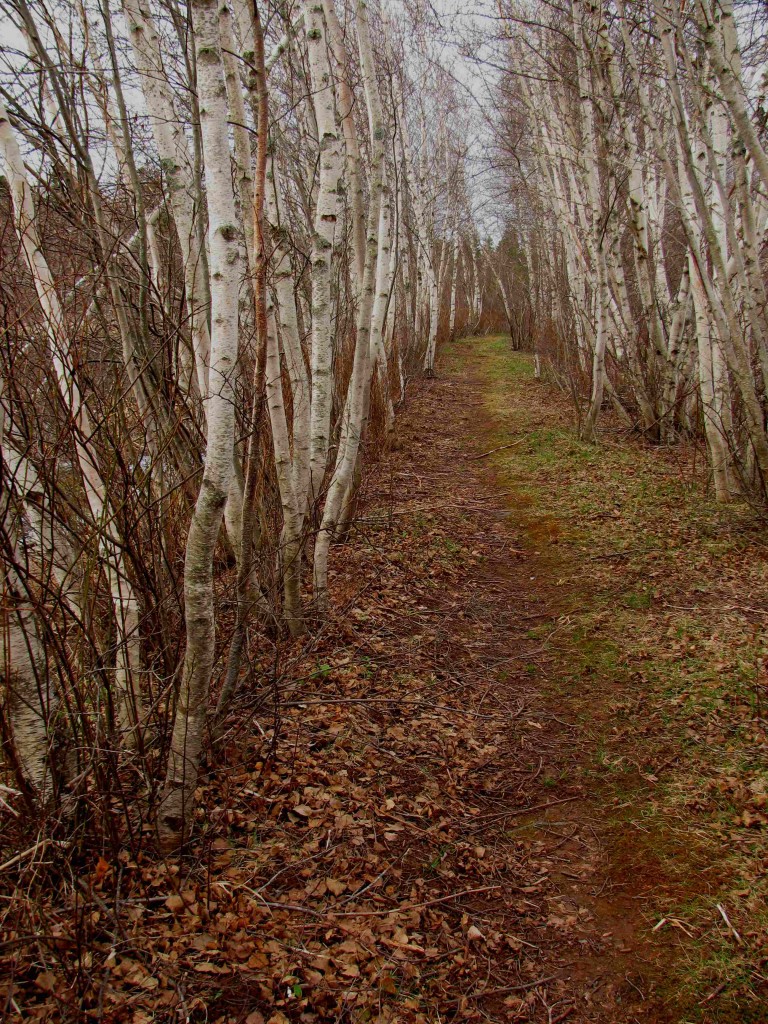
Path on Dam at Wallace Bay National Wildlife Area (© Magi Nams)
For an hour, I hiked a trail west on a narrow, artificial dam constructed by Ducks Unlimited, which separates the freshwater marsh from the salt water of Wallace Bay. Wire or grey birch trees formed screens on both sides of the trail, the short trees providing good foraging for early warblers in spring, as I’ve observed in the past, but today I spotted not a single warbler in them. One swamp sparrow flitted from one side of the dam to the other and sought cover in a patch of weedy growth near the salt water shore, and a half dozen pairs of song sparrows skulked about warily in the lower branches of the birches, occasionally flying out to perch on cattail flowering stalks.
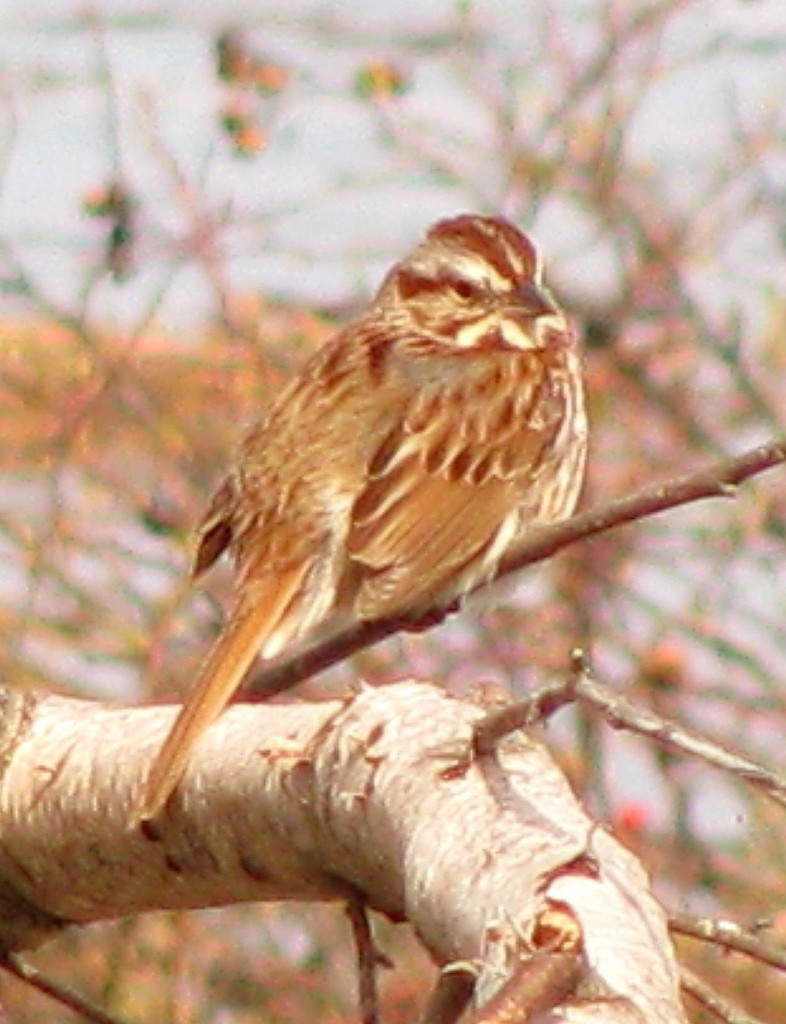
Song sparrow at Wallace Bay National Wildlife Area (© Magi Nams)
Frogs sang rickety songs and plopped into the marsh in startled splashes, bald eagles wheeled overhead, and gulls screamed angled cries. Three times I flushed a Wilson’s snipe from cattail tangles near shore, the long-billed, chunky-bodied shorebird exploding into flight and crying out a sharp, rough ‘skee-a.’ A cold wind blasted out of the north, catching the mournful honks of Canada geese on the water and tossing them to the skies. Pairs of ring-necked and black ducks and American wigeons scuttled away from near shore into open water on the marsh as I approached, the ring-necks muttering anxiously. Far in the distance I could hear the pumping mating call of a pie-billed grebe, and nearer to hand, the robust ‘tsee-tsee-tsee-TSAYA’ of a red-winged blackbird.
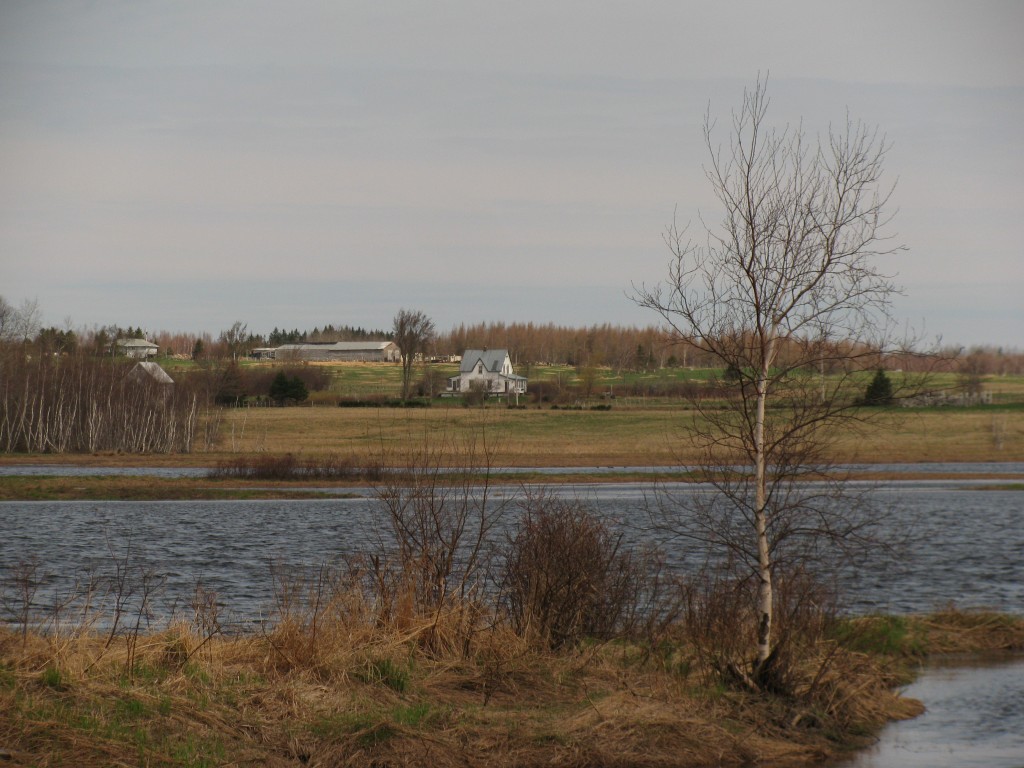
View from Wallace Bay NWA (© Magi Nams)
After an hour of hiking, I turned to retrace my steps, that biting north wind chasing me back to my car. Sunlight spilled onto the marsh, its scintillating reflections on the water like far diamonds framed by a black lace of birch twigs. I’d definitely come too early for the warblers, but the marsh had granted other rewards.
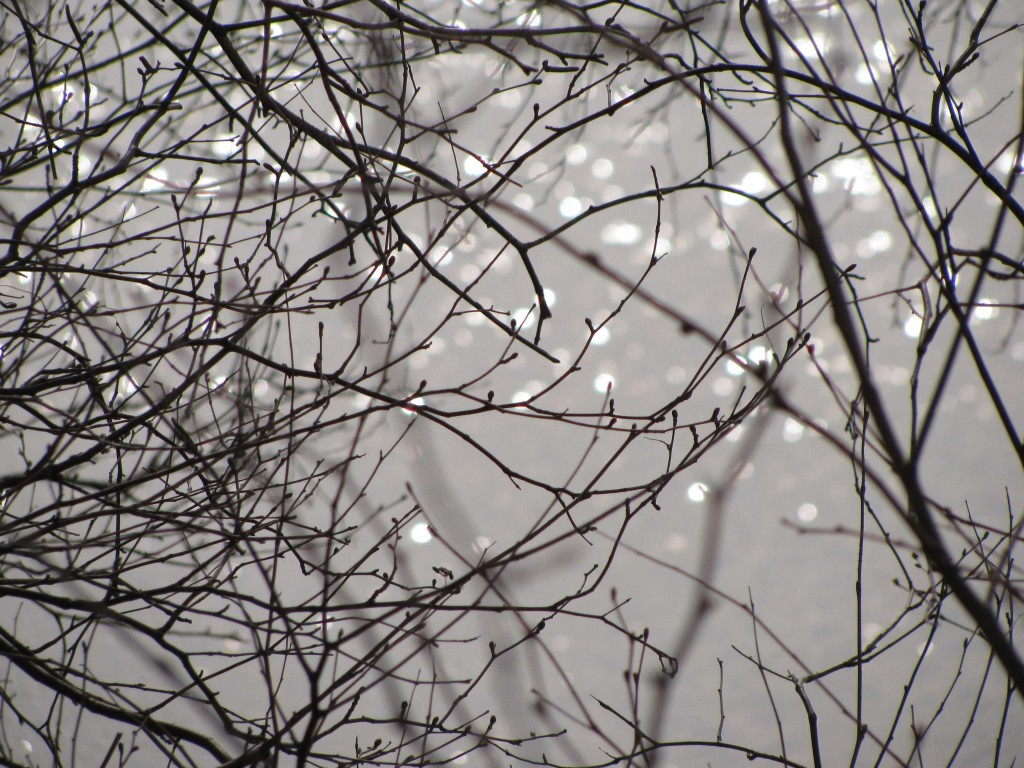
Sparkling Sun at Wallace Bay National Wildlife Area (© Magi Nams)

